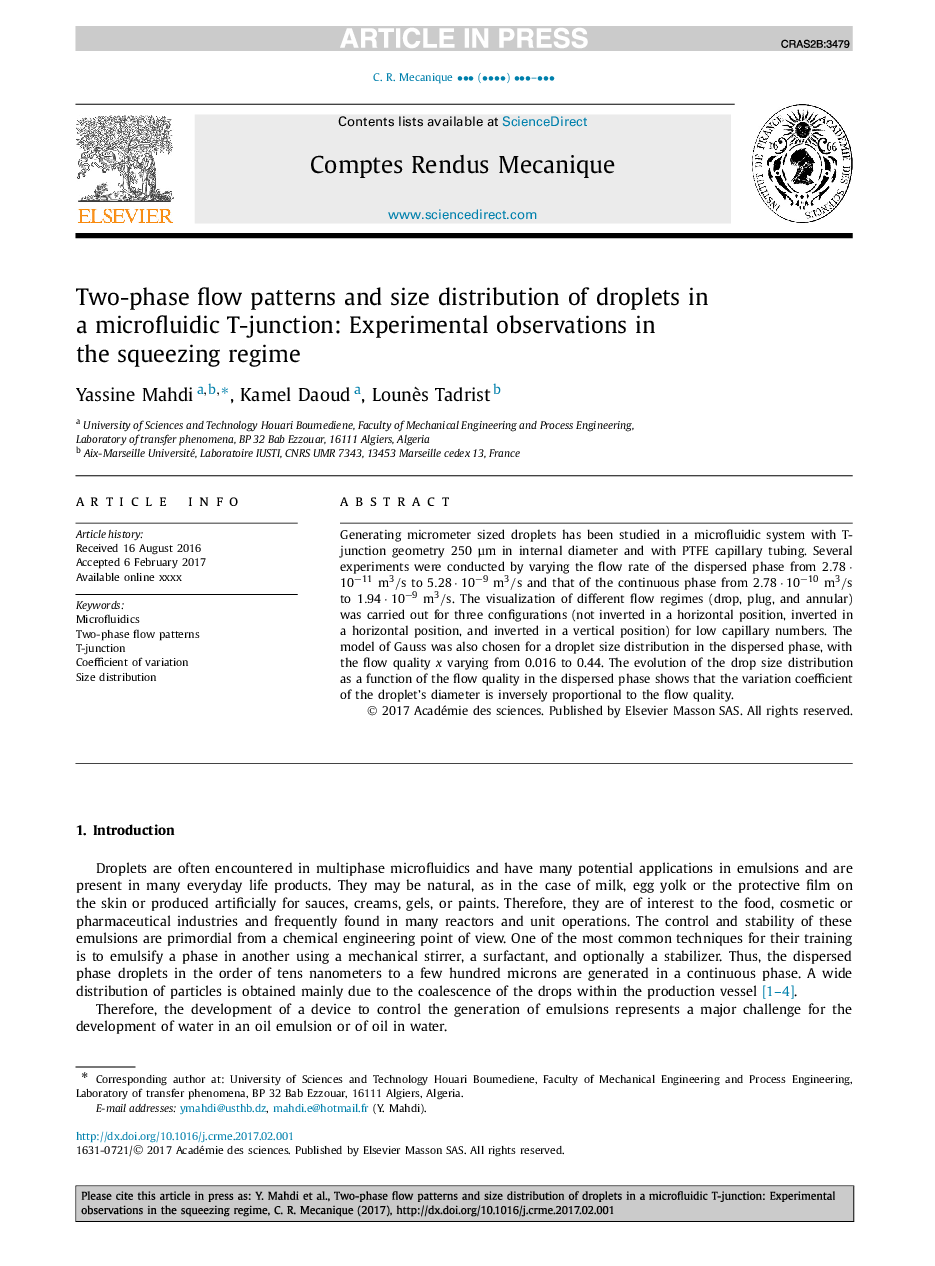| Article ID | Journal | Published Year | Pages | File Type |
|---|---|---|---|---|
| 5022561 | Comptes Rendus Mécanique | 2017 | 12 Pages |
Abstract
Generating micrometer sized droplets has been studied in a microfluidic system with T-junction geometry 250 μm in internal diameter and with PTFE capillary tubing. Several experiments were conducted by varying the flow rate of the dispersed phase from 2.78â
10â11Â m3/s to 5.28â
10â9Â m3/s and that of the continuous phase from 2.78â
10â10Â m3/s to 1.94â
10â9Â m3/s. The visualization of different flow regimes (drop, plug, and annular) was carried out for three configurations (not inverted in a horizontal position, inverted in a horizontal position, and inverted in a vertical position) for low capillary numbers. The model of Gauss was also chosen for a droplet size distribution in the dispersed phase, with the flow quality x varying from 0.016 to 0.44. The evolution of the drop size distribution as a function of the flow quality in the dispersed phase shows that the variation coefficient of the droplet's diameter is inversely proportional to the flow quality.
Related Topics
Physical Sciences and Engineering
Engineering
Engineering (General)
Authors
Yassine Mahdi, Kamel Daoud, Lounès Tadrist,
